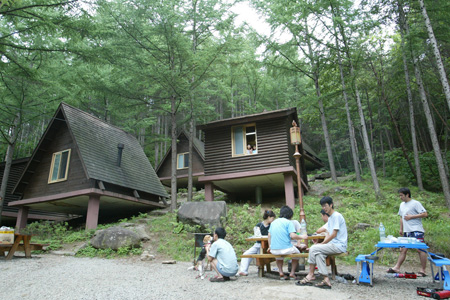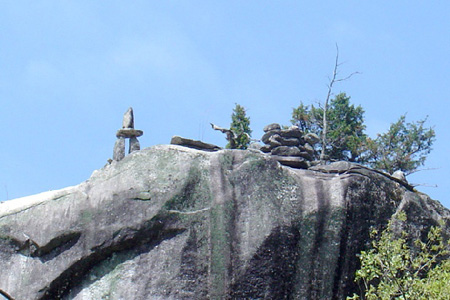

"A mountain with a hidden legend"
Mt. Geumwon's was originally called 'Geomeunsan', meaning 'black mountain' because the mountain was located on the west and it looked dark as the day wore on and the mountain's every rock, every peak and every valley has its own legend.
According to the myth, a long time ago, there lived a golden monkey but he was so unruly that a monk had to restrain him under a rock. That rock was called Natbawi or Nabbawi because it looked like a monkey's face. There are also Jiwooam, the rock that is known to foretell rainfall, Geumdalam, the rock named after the story of Master Daram Lee Seon-dal and his wife Kim, Maseulam, the rock where a devoted son named Banjeon climbed up, bleeding, carrying his father on his back to escape from Japanese invaders, Seomugabawi, the legendary rock about the Seomun Family, one of 5 major two-syllable Chinese family names, that received Gameum-hyeon as a feudal land and came to settle down in Gameun-hyeon, Seonnyeodam, the pond in which three fairies from the heaven took a bath and so on.
There are two very well-known valleys in Mt. Geumwon. They are Yuancheong Valley in Seongingol and Jijaemigol Valley, a misrepresented name that comes from Jijangam Temple. Yuancheong was the studying place for scholars in the town and the valley is surrounded by the beautiful Jaun waterfall, Yuancheong waterfall and thick forest. Jijaemigol Valley is where the legendary Seomungabawi of the Seomun Family is located at and it is known as the historic site where Lee Jeong Gong Seo Moon Ki, who came to Korea with Noguk Princess, and his descendants' studied at. At the entrance of Jijaemigol Valley, there are moonbawi and the Maaesamjonbulsang (rock-carved Buddha triad) of Gaseob Temple which had flourished a splendid tea culture.





